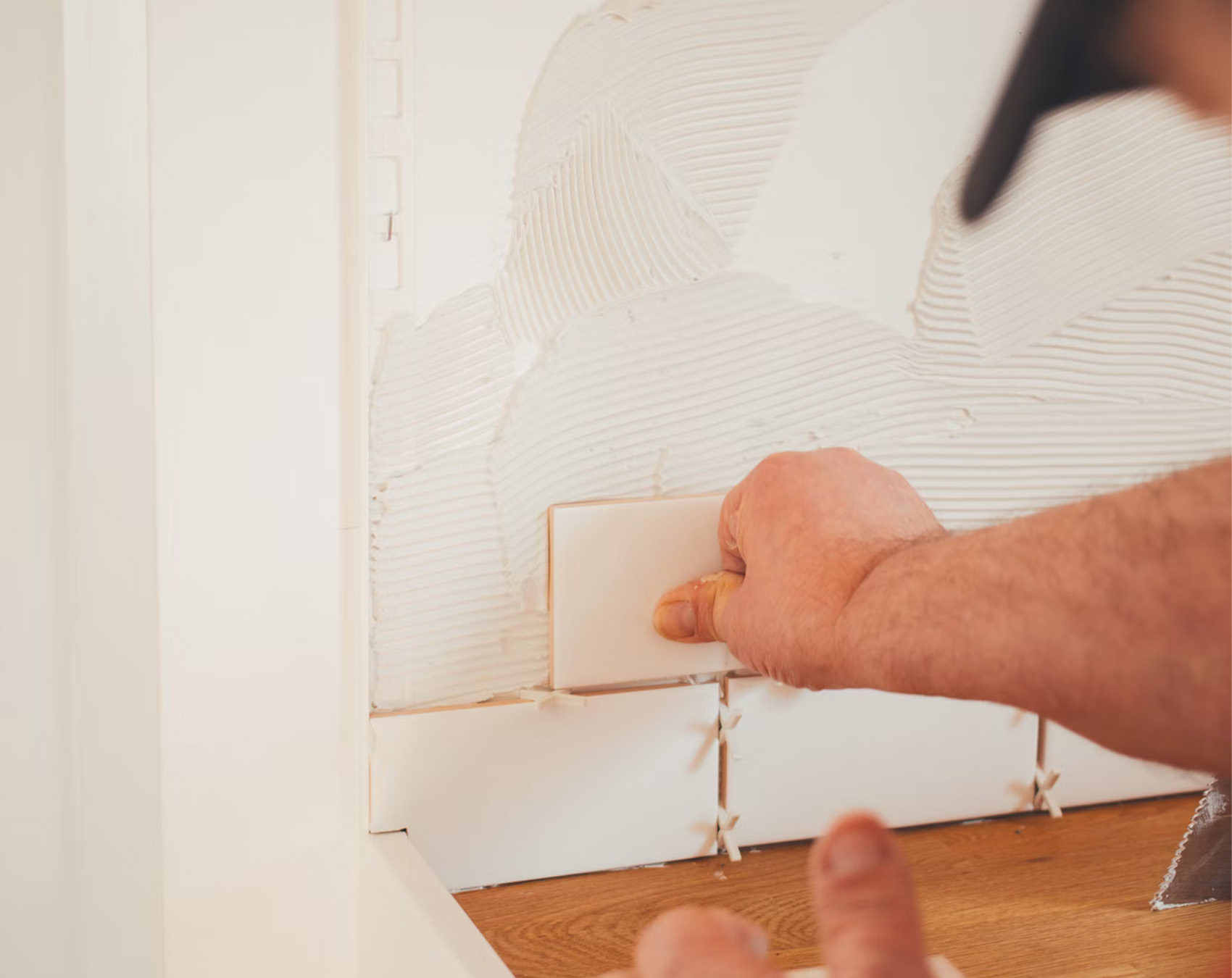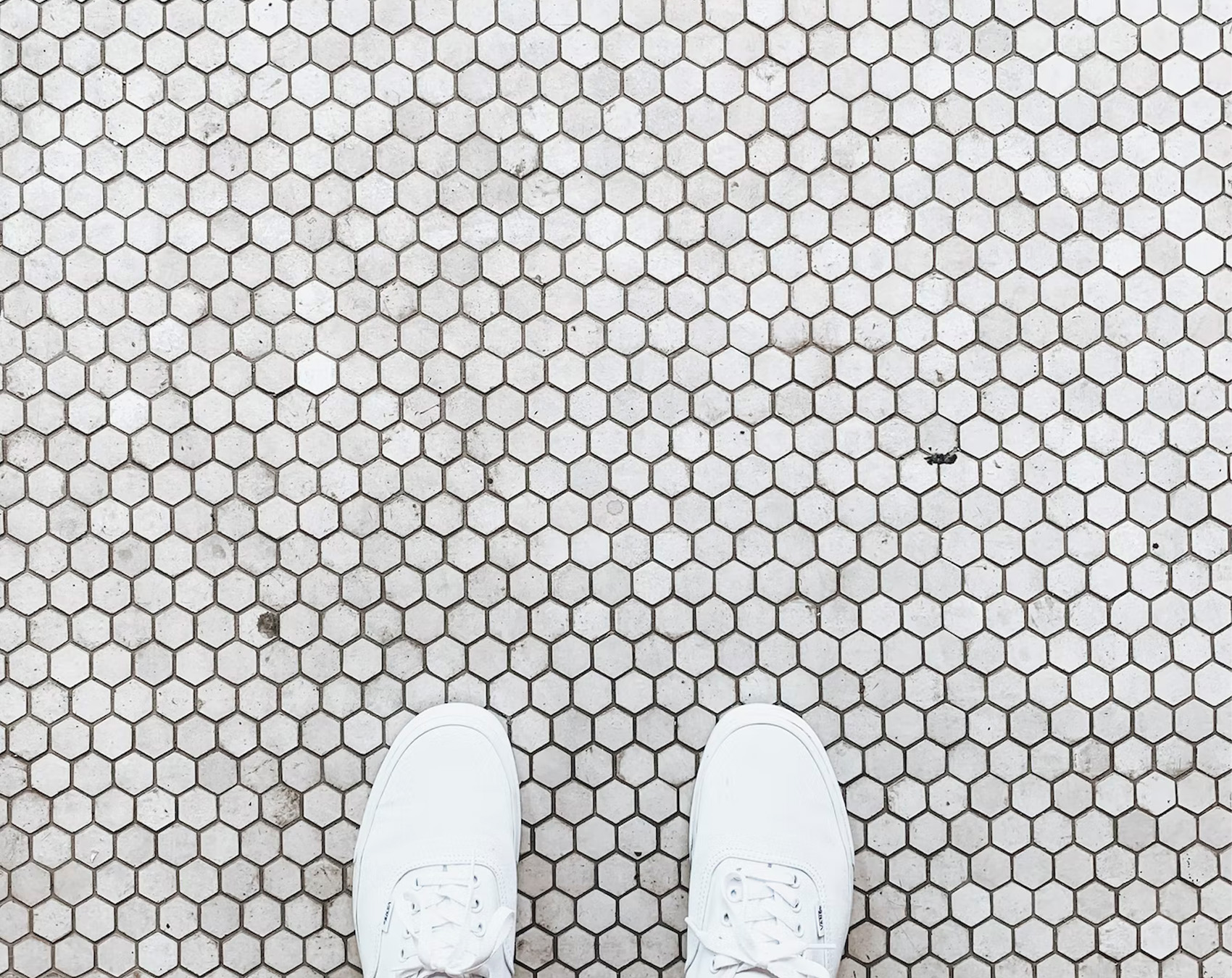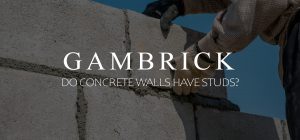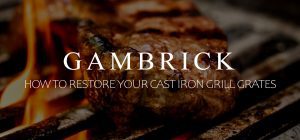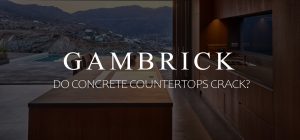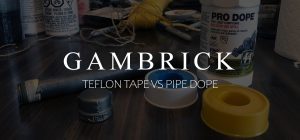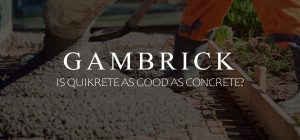Modified Vs Unmodified Thinset
Unmodified thinset is a mixture of Portland cement, sand, and water retention agents. It’s a time-tested masonry product that’s been used to set tile and stone for centuries. Modified thinset contains the same Portland cement, sand and water retention agents as unmodified thinset. However, it also contains additional retention products, such as latex polymers, which can increase its performance and strength. Because of these added ingredients, modified thinset has greater strength and bonding vs unmodified thinset with minimal shrinkage. This means a reduced chance of cracked and/or popped tile and a much thinner application.
Almost all tile installers prefer modified thinset vs unmodified thinset. The benefits gained by adding laytex to the mix are just to good to pass up. Modified thinset has more strength, better bonding, crack resistant, minimal shrinkage and can be applied much thinner than conventional thinset.
In addition, some types of modified thinset don’t have to be mixed with water before using them. This is a huge time savings and helps keep a jobsite clean. I tile in a lot of tight city apartment bathrooms and kitchens where there’s not a whole lot of space to mix thinset. Using pre-mixed modified thinset is much faster and cleaner to work with. Simply open the tub and you’re ready to start troweling.
What is Unmodified Thinset?
Unmodified thinset is made from sand, cement, and lime. It’s commonly referred to as dry-set mortar by the manufacturer.
Modified thinset mortars are essentially the exact same thing as unmodified thinset, except they contain additional laytex polymers. These additional polymers are introduced in either liquid or powder form to give the thinset attributes like increased strength and durability.
Unmodified thinset is what Schluter Systems has specified for its membranes like Kerdi, Ditra, Ditra XL, Ditra-Heat, and Ditra-Heat-Duo. Most other membrane manufacturers also require unmodified dry-set mortar.
Always check with the manufacturer before using thinset on a membrane.
What is Modified Thinset?
All thinset is made from sand, cement, and lime. But modified thinset also contains laytex polymers and other ingredients. These ingredients make modified thinset stronger, more durable and less prone to shrinkage which means less cracks. Modified thinset can also be applied much thinner than standard thinset because it’s stronger.
One of the downsides to modified thinset is that it requires air to cure. Unmodified thinset does not. This means you can not use modified thinset between two imprevious layers, such as between a membrane and tile.
Because of this fact, most membrane manufacturers, like Schluter Systems, require unmodified mortar.
What’s The Difference Between Modified & Unmodified Thinset
The difference between modified and unmodified thinset is that modified thinset contains laytex polymers and other ingredients that regular thinset doesn’t have. These ingredients make modified thinset stronger, more durable and less prone to shrinkage which means less cracks. Modified thinset can also be applied much thinner than standard thinset because it’s stronger.
Because of the additives used in modified thinset, it needs air to dry. Unmodified thinset does not. This effects the way you can use the thinset. For example, you should not use modified thinset to set tile on an impervious membrane because it won’t cure properly.
Unmodified thin-set mortar is commonly referred to as dry-set mortar by the manufacturer. Modified thin-set mortars are similar to unmodified thin-set mortars, but include additional latex polymers. These additional polymers are introduced in either liquid or powder form to give the thinset attributes like greatly strength and durability.
Modified thinset is essentially enhanced thinset. If you take unmodified thinset and add latex polymers, you get modified thinset.
Both unmodified and modified thinset are made with Portland cement. When water and Portland cement are mixed together, a chemical reaction known as hydration occurs. The cement reacts with water and forms interlocking crystals which make the cement hard. These crystals continue to grow as long as they’re exposed to moisture. Once the mixture dried out, they start to slow down and eventually stop. This process is called curing.
Curing thinset slowly is very important if you want a strong bond between the tile and substrate. As long as moisture and cement co-exist, the strength, density, and durability of the thinset will gradually increase.
One of the benefits of modified thinset is that it contains added ingredients that provide better water retention. More water retention means a slower cure and stronger thinset.
Should I Use Modified Or Unmodified Thinset?
In almost all cases you should use modified thinset to set tile and stone. Both modified and unmodified thinset is made from sand, cement, and lime. But modified thinset also contains laytex polymers and other additives. These additional ingredients make modified thinset stronger, more durable and less prone to shrinkage which means fewer cracks and popped tiles. It can also be applied much thinner than standard thinset because of its increase strength and flexibility.
However, one of the downsides of modified thinset it that it needs air to cure properly. Unmodified thinset does not.
If you’re tiling on top of a membrane, like Schluter, you shouldn’t use a modified thinset because it won’t cure correctly when sandwiched between two impervious layers. In this case, you should use either an unmodified thinset or a thinset modified by Schluter or another membrane manufacturer.
Characteristics Of Modified Vs Unmodified Thinset
Modified and unmodified thinset come in different grades which effects the products performance. These grades are dictated by the ratio of cement to sand used in the mixture. In addition, modified thinset is also effected by the percentage of retention product added to the mix. There are three elements: cement, sand, and the retention compound, which give modified and unmodified thinset its attributes.
- A high-quality thinset will have a higher percentage of cement in the mix. More cement makes thinset stronger, more durable and sticky.
- One of the most widely used retention compounds added to cement based products is hydrated lime. Using it provides long-term water retention properties which slows down curing.The result is a stronger concrete, mortar, grout or thinset.
- Hydrated lime helps cement retain water so it can cure slowly. This makes the thinset stronger and more durable.
Modified thinset also includes additional polymers which are added in either liquid or powder form.
Modified thinset can be mixed with a liquid polymer instead of water at the factory.It’s then sold as a pre-mixed thinset which does need to be mixed with water. This can be very helpful on jobs where you don’t have space to mix your own thinset.
Manufacturers can also include the polymers as a powder. In this case the modified thinset would be mixed with water on site.
You can grade thinset by looking at the ratio between its ingredients. The most important thing to look for is the ratio of cement it contains. More cement means a stronger, stickier, more durable thinset.
Is Modified Thinset Stronger Than Unmodified Thinset?
Yes, modified thinset is stronger than modified thinset. Both modified and unmodified thinset contain Portland cement, sand and lime. But modified thinset also contains laytex polymers and other additives which increase its strength, durability, flexibility and bonding. This means you can apply modified thinset much thinner with less chance of cracked and/or popped tiles.
What Do You Use Unmodified Thinset For?
Use unmodified thinset when tiling over an impervious membrane unless the manufacturer states otherwise. Flooring membrane are impervious, which means they will not suck moisture out of the thinset. As a result, unmodified thinset can properly hydrate by creating interlocking crystals which form a strong, dense bond.
- Modified thinset relies on air to properly cure. When it’s applied between two impervious layers, such as tile and certain membranes, drying can only take place through the open grout joints. This could take up to 60 days. If you plan on grouting as soon as the thinset hardens, a modified thinset is a bad choice because it will not cure properly.
- It’s important to note that modified thinset can be used between the membrane and subfloor if the subfloor is not impervious. For example, wood, concrete and cement boards are not impervious so modified thinset would be fine.
- Unmodified thinset should almost always be used between the membrane and tile because membranes are impervious.
Make sure to check with your membrane manufacturer to see what type of thinset they recommend.
Unmodified thinset is used for tiling over concrete slabs.
Does Schluter Require Modified Or Unmodified Thinset?
Schluter Systems requires unmodified mortars with all of their membranes. This is because modified mortars won’t cure properly don’t cure properly when used between two impervious layers such as tile and a membrane.
Impervious layers don’t such moisture out of thinset. But modified mortar requires air to cure properly. So when you use it between two impervious layers, the only way it can dry is through the grout gaps. This can take up to 60 days. If you plan on grouting after you tile, like every tile installer does, you must use an unmodified thinset.
Unmodified thinset can cure properly even when used between two impervious layers.
- Most tiles are impervious.
- Schulter membranes are also impervious.
- Impervious means water can not pass through the material.
- Modified thinset requires air to cure properly.
- When modified thinset is used between tile and a membrane, it can’t dry properly once the tiles are grouted.
Schluter requires unmodified mortar to install tile over a membrane because modified mortar won’t cure properly.
Should I Use Unmodified Or Modified Thinset On Porcelain Tile?
Modified mortar should almost always be used with porcelain tiles. Porcelain tile is very dense and hard to grip. The polymers added to modified thinset give it additional strength, durability and grip with less shrinkage, which makes it better all around for porcelain.
Almost all tile manufacturers want you to use modified mortar with porcelain tiles. Unmodified mortar typically has a hard time bonding with porcelain tile which causes popped tiles and/or cracks.
This creates a conflict with membrane manufacturers like Schluter.
- Schluter recommends using unmodified mortar over their products like Ditra and Kerdi.
- Thinset and tile manufacturers recommend using modified mortar when installing porcelain tile
If you want to install porcelain tile over a membrane like Schluter, you should use a modified mortar made specifically for impervious membranes.
Schluter manufactures their own line of thinset mortars which includes modified mortar.
- Schluter Set (unmodified and LFT)
- Schluter All-Set (modified and LFT)
- Schluter Fast-Set (modified, LFT, and rapid setting)
Each product is approved for Schluter membranes with the exception that unmodified thinset should not be used to install Ditra over a plywood subfloor.
Schluter thinsets are specifically formulated for use with other Schluter products.
What’s An ANSI Number?
ANSI stand for the American National Standards Institute. An easy way to know if thinset is modified or unmodified is to look at the ANSI number. Unmodified thinset has the number A118.1. However, when thinset is modified the ANSI number will change.
A118.1 is for unmodified thinset. Modified thinset typically has a longer sequence of numbers after this code. For example, if a bag of thinset reads A118.11 or A118.4, it’s a modified thinset.
Be aware that an unmodified thinset can be changed to a modified thinset by using an admix (liquid latex). If what you want is an unmodified thinset, don’t add any additional ingredients to it other than water.
The Best Unmodified Thinset
Tips For Working With Thinset
Here are some quick tips that can help when working with thinset.
- Always add dry thinset mix to water, not the other way around.
- Don’t use too much water. It makes thinset weak and hard to work with.
- The proper consistency of mixed thinset is like creamy peanut butter. It should retain it’s form when spread with a trowel.
- If you over water thinset, add more dry mix until it reaches the correct consistency.
- Mix large batches of thinset with a drill fitted with a mixing paddle.
- Mix small batches of thinset with a margin trowel.
- Test thinset by grabbing it with your hand. If it’s moist and sticky like a paste it’s still good, if it breaks up and feels dry, throw it out and mix a fresh batch.
- Begin mixing thinset slowly at first to avoid splashing powder around the room. Then speed up as it becomes like batter.
- Mix only enough thinset that you can use in 20-30 minutes. This helps prevent hardening in the bucket.
- Covering your bucket with plastic will make thinset lest longer.
- Keep mixing thinset until there are no air gaps or bubbles.
- You can turn unmodified thinset into modified thinset by adding latex polymer as you mix.
Frequently Asked Questions (FAQ)
Here are some frequently asked questions we get about modified vs unmodified thinset. If you have any questions not covered in the article, send us an email and we’ll answer your question here.
Will unmodified thinset bond to plywood?
No. Unmodified thinset meeting ANSI A118.1 will not bond well to plywood. Instead, use a thinset that meets ANSI A118.11. However, you can use an unmodified thinset on plywood if you also use an additive that brings it up to the ANSA A118.11 standard.
What happens if you use modified thinset on Kerdi?
Modified thinset mortars aren’t recommended for use on Kerdi because they’re impervious. Which means they prevent modified thinset from curing properly. The result is usually a weaker, less durable thinset that’s more prone to cracks and popped tiles. Kerdi recommend using only unmodified thinset or one of their own modified thinset products over Kerdi.
Can you use unmodified thinset under Ditra?
Yes, you should use an unmodified mortar meeting ANSI A118.1 when installing Schluter products over concrete.
However, most Schluter products require a modified thinset meeting ANSI A118.11 when installing Ditra, Ditra XL, Ditra-Heat, or Ditra-Heat-Duo over a plywood or OSB subfloor.
Summary: Modified Vs Unmodified Thinset
Unmodified thinset is a mixture of Portland cement, sand, and water retention agents. It’s a time-tested masonry product that’s been used to set tile and stone for centuries. Modified thinset contains the same Portland cement, sand and water retention agents as unmodified thinset. However, it also contains additional retention products, such as latex polymers, which can increase its performance and strength. Because of these added ingredients, modified thinset has greater strength and bonding vs unmodified thinset with minimal shrinkage. This means a reduced chance of cracked and/or popped tile and a much thinner application.
Almost all tile installers prefer modified thinset vs unmodified thinset. The benefits gained by adding laytex to the mix are just to good to pass up. Modified thinset has more strength, better bonding, crack resistant, minimal shrinkage and can be applied much thinner than conventional thinset.
In addition, some types of modified thinset don’t have to be mixed with water before using them. This is a huge time savings and helps keep a jobsite clean. I tile in a lot of tight city apartment bathrooms and kitchens where there’s not a whole lot of space to mix thinset. Using pre-mixed modified thinset is much faster and cleaner to work with. Simply open the tub and you’re ready to start troweling.
If you have any questions email any time.

